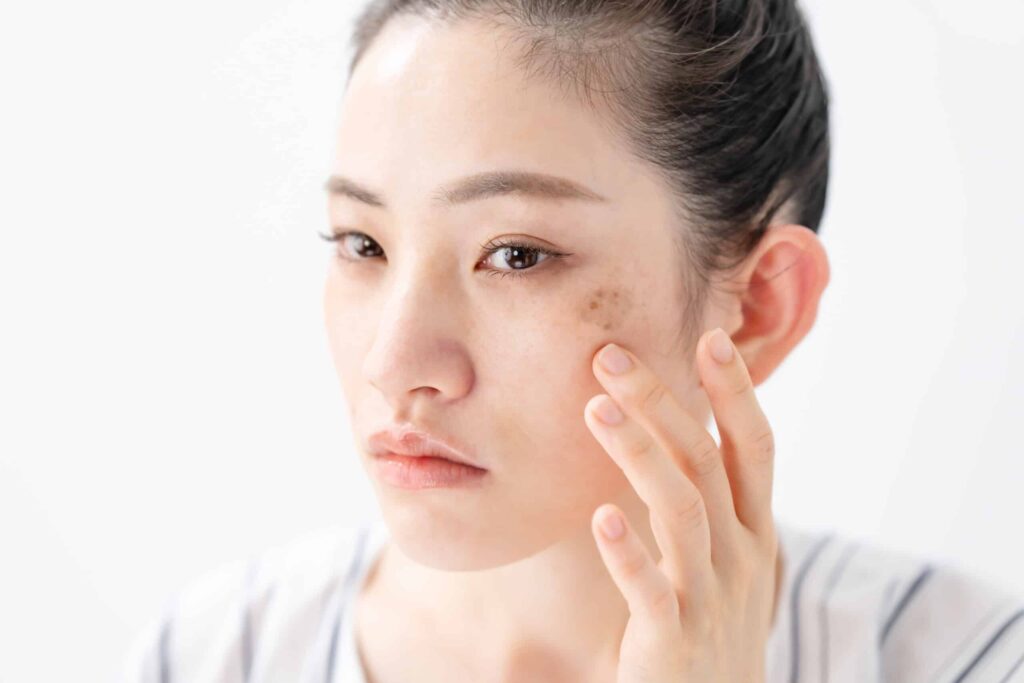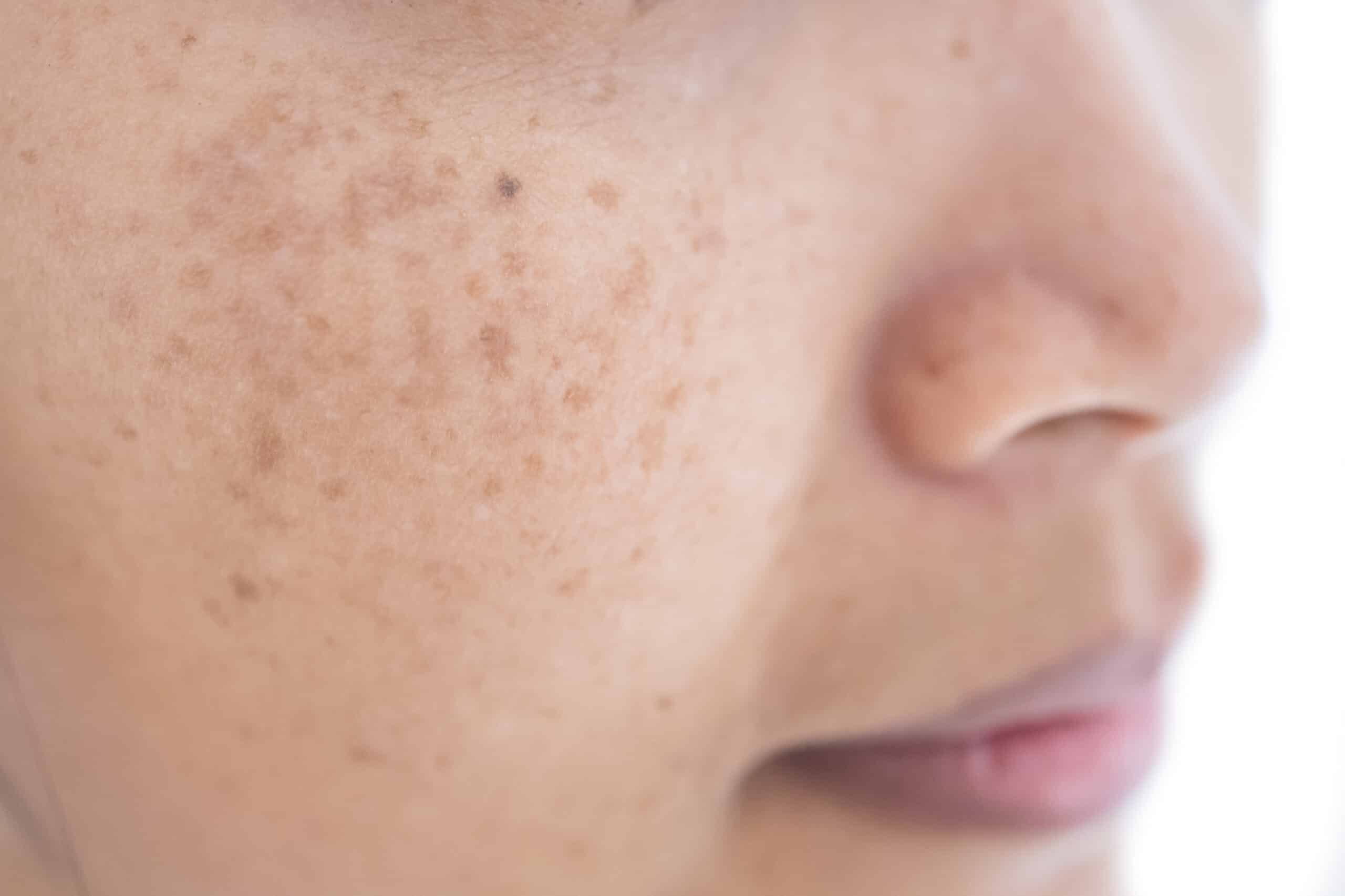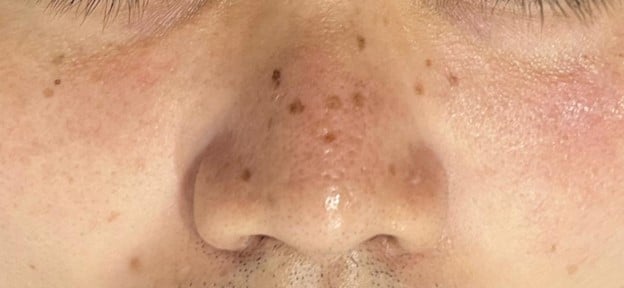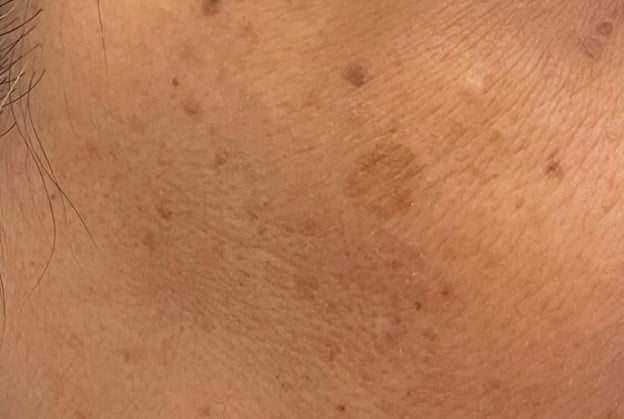


Pigmentation concerns, such as dark spots, freckles, melasma, and uneven skin tone, are common among many individuals, regardless of age or skin type.
Freckles occur when sun exposure triggers increased melanin production, resulting in small patches of pigmentation. While some embrace these natural features, others wonder whether they will naturally fade with age. Let’s explore the factors that influence freckles fading with age.


Clusters of small brown spots on the skin are commonly known as freckles. They often appear on areas like the face, arms, neck, and chest.
Also Read: Skin Pigmentation Types and Treatments
They are more common in individuals with fair complexions. On the other hand, age spots, also known as sunspots, liver spots, or solar lentigines, usually appear as singular spots or in close proximity to one or two others. Unlike freckles, which may become less noticeable with less sun exposure, age spots don’t naturally fade with age. Please note that in Singapore’s sunny climate, freckles can fade with sun avoidance and protection – however, they may not disappear entirely especially for genetically predisposed individuals or those with continued unprotected sun exposure.
While the extent of freckle fading can vary from person to person, several key factors come into play.
Freckles are flat brown spots that appear on sun-exposed skin. They have a smooth texture and do not protrude above the skin like moles. Exposure to sunlight leads to an increase in melanin production, resulting in the development of more freckles on the skin. Anyone who doesn’t use ultraviolet (UV) protection is highly prone to them.
Freckles tend to run in families, but they are not completely determined by your biological inheritance.
Considering the number of genes at play, there exists a diverse range of potential interactions and influences among them. Therefore, not every combination leads to freckles. Some individuals may lack visible brown spots but still carry the genetic marker for freckles.
For instance, the MC1R gene is associated with both freckles and red hair. If this specific genetic variant is present in both copies of the gene, it often results in freckles. However, if there’s only one copy of the variant, freckles may or may not develop.
The appearance of freckles changes as we grow older.
In childhood, freckles may appear as faint and light spots. When individuals with fair complexions experience increased sun exposure, freckles become more prominent. As one enters adulthood, they may darken, becoming more conspicuous, particularly on areas of the skin frequently exposed to sunlight.
As individuals progress beyond middle age, freckles may gradually begin to fade. However, freckles don’t always completely fade with age. Some may persist, especially in individuals with a genetic predisposition to freckling.
Throughout a woman’s life, hormonal levels undergo major changes. Research indicates that elevated levels of estrogen, and to a lesser extent, heightened progesterone levels, are linked to increased skin pigmentation in cases of melasma.
This explains why melasma is often observed during pregnancy and in women using oral contraceptive pills or undergoing hormone replacement therapy (HRT). During these circumstances, increased hormonal levels directly and indirectly stimulate melanocytes, leading to pigment production.
When selecting skincare products to address freckles, prioritise those containing these key ingredients:
Vitamin C: Brightens the skin and helps diminish the appearance of freckles.
Kojic Acid: A natural ingredient with proven skin-lightening properties, it lightens freckles and promotes an even skin tone.
Arbutin: Another natural compound known for its freckle-lightening abilities and its capacity to prevent new ones from forming.
Niacinamide: This form of vitamin B3 has been proven to improve the appearance of freckles and promote skin evenness.
While freckles are harmless, some individuals prefer to have them removed for cosmetic reasons. You can choose from various pigmentation removal treatments in Singapore based on your individual preferences and the specific characteristics of your freckles.
A common method used to rejuvenate skin is skin resurfacing. This refers to any treatments or procedures aiming to remove the top layer of your skin. The goal is to eliminate damaged cells on the skin’s surface, employing techniques like chemical peels, lasers, ultrasound, or radio-frequency technology. These methods encourage the production of collagen and elastin at the surface level of your skin. Through this process, you’ll achieve a renewed and youthful skin surface in the treated area. These different methods vary in process, invasiveness, and treatment outcomes.
One such treatment is chemical peels. They are used on the face or other body areas to achieve a rejuvenating effect. These peels effectively lighten mild pigmentation concerns such as sun spots, age spots, and freckles.
Another popular treatment is the Pico Laser. It’s a non-ablative pigment laser that operates using ultra-short 450 picosecond laser pulses. The picosecond laser breaks down pigmentation into smaller fragments, making them more easily eliminated by the body’s immune system.
Here are some of the conditions that Pico Lasers treat:
At SL Aesthetic Clinic, we have a range of personalised pigmentation removal treatments in Singapore, including specialised peels and advanced laser therapies for your skin concerns.
Take the first step towards a clearer, more radiant complexion by scheduling a consultation with us today.
Like what you read? Share them!